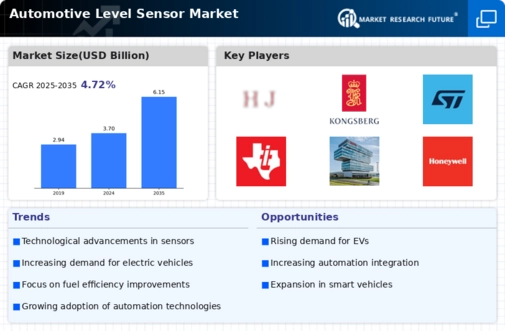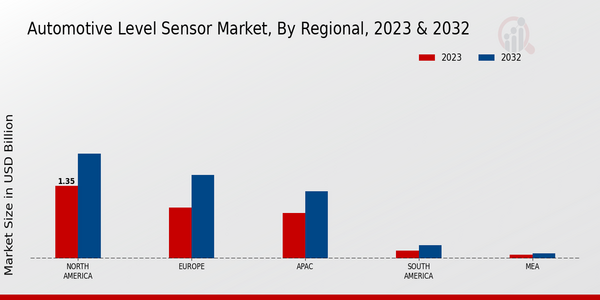The competitive landscape of the Automotive Level Sensor Market is characterized by a diverse range of players, each striving to enhance their market share through innovation, strategic partnerships, and the deployment of advanced technologies.
Considerable focus has emerged on the integration of smart sensors within vehicles, driven by the increasing demand for accurate level measurement in applications such as fuel, oil, and coolant systems. The market is witnessing heightened competition due to an influx of new entrants and existing manufacturers expanding their product lines to cater to the evolving needs of automotive manufacturers.
Industry players are also leveraging their technological expertise to develop more reliable and efficient level-sensing solutions aimed at improving vehicle performance and safety.
Hella has positioned itself as a formidable player in the Automotive Level Sensor Market, recognized for its commitment to innovation and quality. The company has a strong presence in the sector, primarily focusing on electronic and electromechanical solutions that cater to various automotive applications.
Hella's strengths lie in its extensive research and development capabilities, which enable the company to remain at the forefront of technological advancements. The brand is known for producing high-precision level sensors that offer exceptional reliability and functionality, appealing to both OEMs and aftermarket segments.
Additionally, Hella's strong relationships with leading automotive manufacturers enhance its market positioning, allowing it to develop tailored solutions that meet the specific requirements of its clientele.
Kongsberg Gruppen is another significant contributor to the Automotive Level Sensor Market, demonstrating a robust portfolio of advanced sensor technologies. The company excels in providing innovative level sensing solutions that are designed to withstand demanding operational environments typical in the automotive sector.
Kongsberg Gruppen's strengths include its deep expertise in engineering and its ability to develop cutting-edge products that align with industry trends such as electrification and automation. The company's commitment to sustainability and smart technology integration further distinguishes it from competitors, allowing Kongsberg Gruppen to capture growth opportunities within the market.
Moreover, its global reach and strategic partnerships enhance its ability to serve a diverse clientele, solidifying its presence in the competitive automotive landscape.























